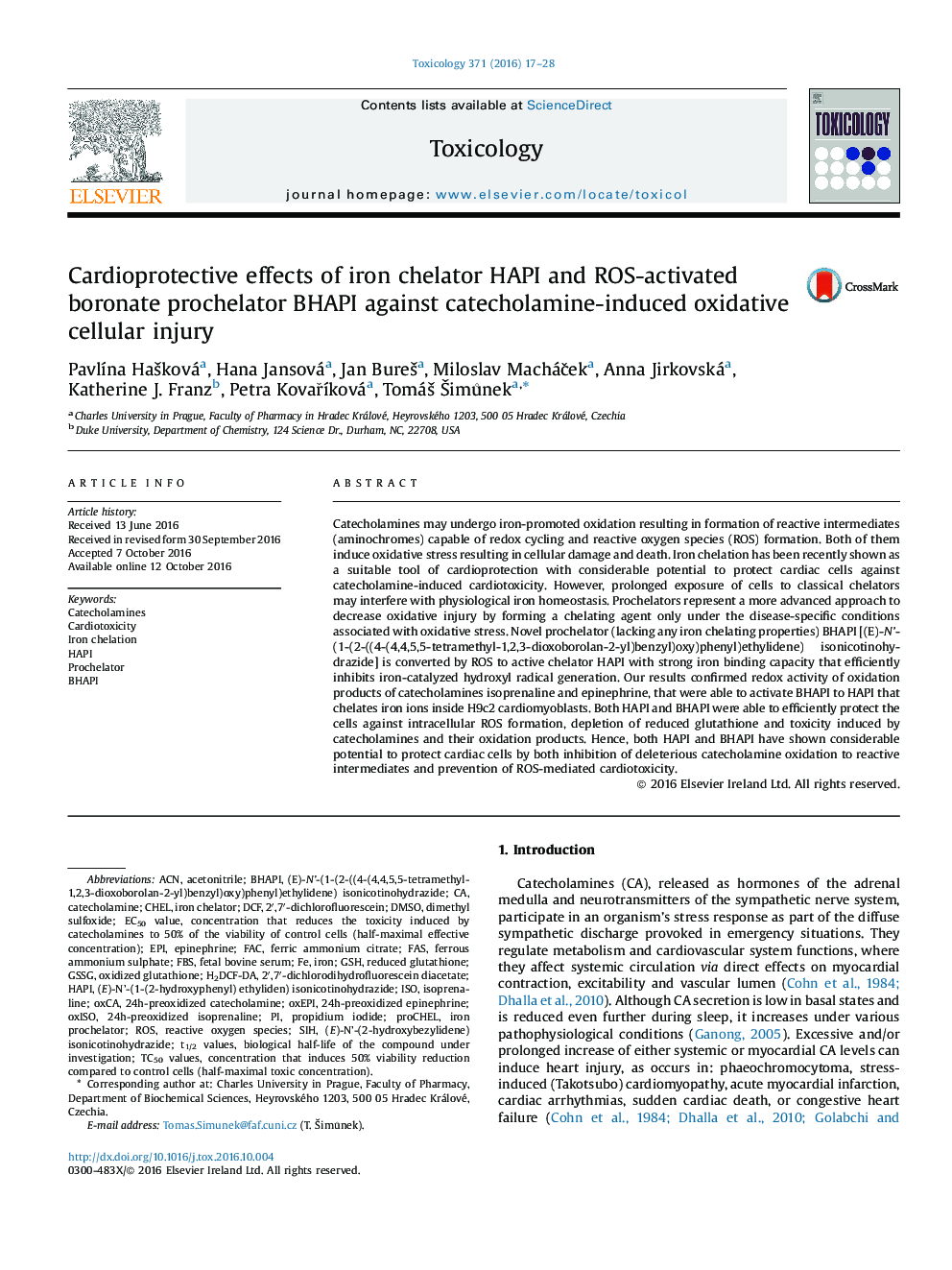| کد مقاله | کد نشریه | سال انتشار | مقاله انگلیسی | نسخه تمام متن |
|---|---|---|---|---|
| 5561921 | 1562301 | 2016 | 12 صفحه PDF | دانلود رایگان |

- Fe prochelator BHAPI was examined for protection against catecholamine cardiotoxity.
- BHAPI has no affinity for iron ions until it is activated to active chelator HAPI.
- Catecholamines, as a source of ROS, induced conversion of BHAPI into HAPI.
- BHAPI and HAPI decrease ROS formation induced by catecholamines.
- BHAPI and HAPI protect H9c2 cells against oxidative injury induced by catecholamines.
Catecholamines may undergo iron-promoted oxidation resulting in formation of reactive intermediates (aminochromes) capable of redox cycling and reactive oxygen species (ROS) formation. Both of them induce oxidative stress resulting in cellular damage and death. Iron chelation has been recently shown as a suitable tool of cardioprotection with considerable potential to protect cardiac cells against catecholamine-induced cardiotoxicity. However, prolonged exposure of cells to classical chelators may interfere with physiological iron homeostasis. Prochelators represent a more advanced approach to decrease oxidative injury by forming a chelating agent only under the disease-specific conditions associated with oxidative stress. Novel prochelator (lacking any iron chelating properties) BHAPI [(E)-Å-(1-(2-((4-(4,4,5,5-tetramethyl-1,2,3-dioxoborolan-2-yl)benzyl)oxy)phenyl)ethylidene) isonicotinohydrazide] is converted by ROS to active chelator HAPI with strong iron binding capacity that efficiently inhibits iron-catalyzed hydroxyl radical generation. Our results confirmed redox activity of oxidation products of catecholamines isoprenaline and epinephrine, that were able to activate BHAPI to HAPI that chelates iron ions inside H9c2 cardiomyoblasts. Both HAPI and BHAPI were able to efficiently protect the cells against intracellular ROS formation, depletion of reduced glutathione and toxicity induced by catecholamines and their oxidation products. Hence, both HAPI and BHAPI have shown considerable potential to protect cardiac cells by both inhibition of deleterious catecholamine oxidation to reactive intermediates and prevention of ROS-mediated cardiotoxicity.
Journal: Toxicology - Volume 371, 14 September 2016, Pages 17-28